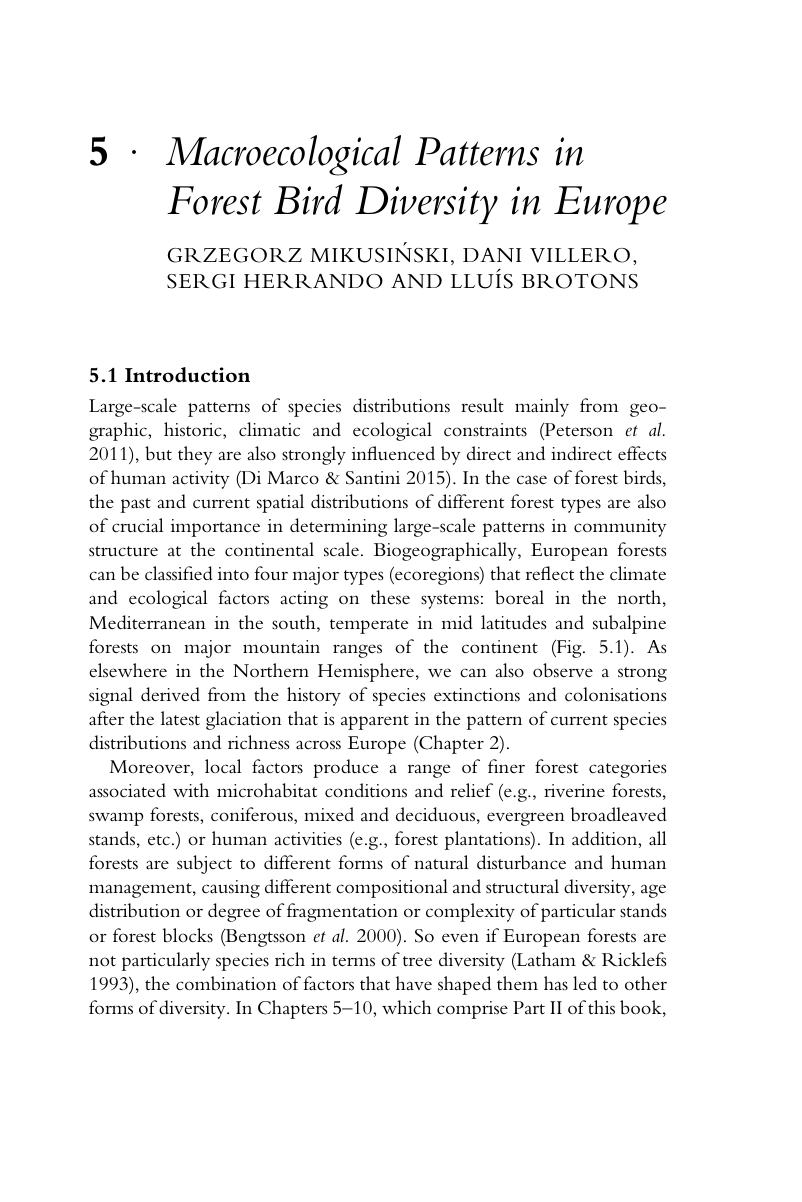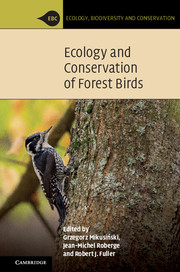Book contents
- Ecology and Conservation of Forest Birds
- Ecology, Biodiversity and Conservation
- Ecology and Conservation of Forest Birds
- Copyright page
- Contents
- Acknowledgements
- Contributors
- 1 Introduction
- Part I Forest Birds and Their Adaptations
- Part II European Forests and Their Bird Communities
- 5 Macroecological Patterns in Forest Bird Diversity in Europe
- 6 Boreal Forest Bird Assemblages and Their Conservation
- 7 Subalpine Coniferous Forests of Europe
- 8 Temperate Forests
- 9 Mediterranean Forest Bird Communities and the Role of Landscape Heterogeneity in Space and Time
- 10 Plantations of Non-native Tree Species
- Part III Conservation and Management
- Species Index
- Subject Index
- References
5 - Macroecological Patterns in Forest Bird Diversity in Europe
from Part II - European Forests and Their Bird Communities
Published online by Cambridge University Press: 15 March 2018
- Ecology and Conservation of Forest Birds
- Ecology, Biodiversity and Conservation
- Ecology and Conservation of Forest Birds
- Copyright page
- Contents
- Acknowledgements
- Contributors
- 1 Introduction
- Part I Forest Birds and Their Adaptations
- Part II European Forests and Their Bird Communities
- 5 Macroecological Patterns in Forest Bird Diversity in Europe
- 6 Boreal Forest Bird Assemblages and Their Conservation
- 7 Subalpine Coniferous Forests of Europe
- 8 Temperate Forests
- 9 Mediterranean Forest Bird Communities and the Role of Landscape Heterogeneity in Space and Time
- 10 Plantations of Non-native Tree Species
- Part III Conservation and Management
- Species Index
- Subject Index
- References
Summary

- Type
- Chapter
- Information
- Ecology and Conservation of Forest Birds , pp. 137 - 182Publisher: Cambridge University PressPrint publication year: 2018
References
- 4
- Cited by



